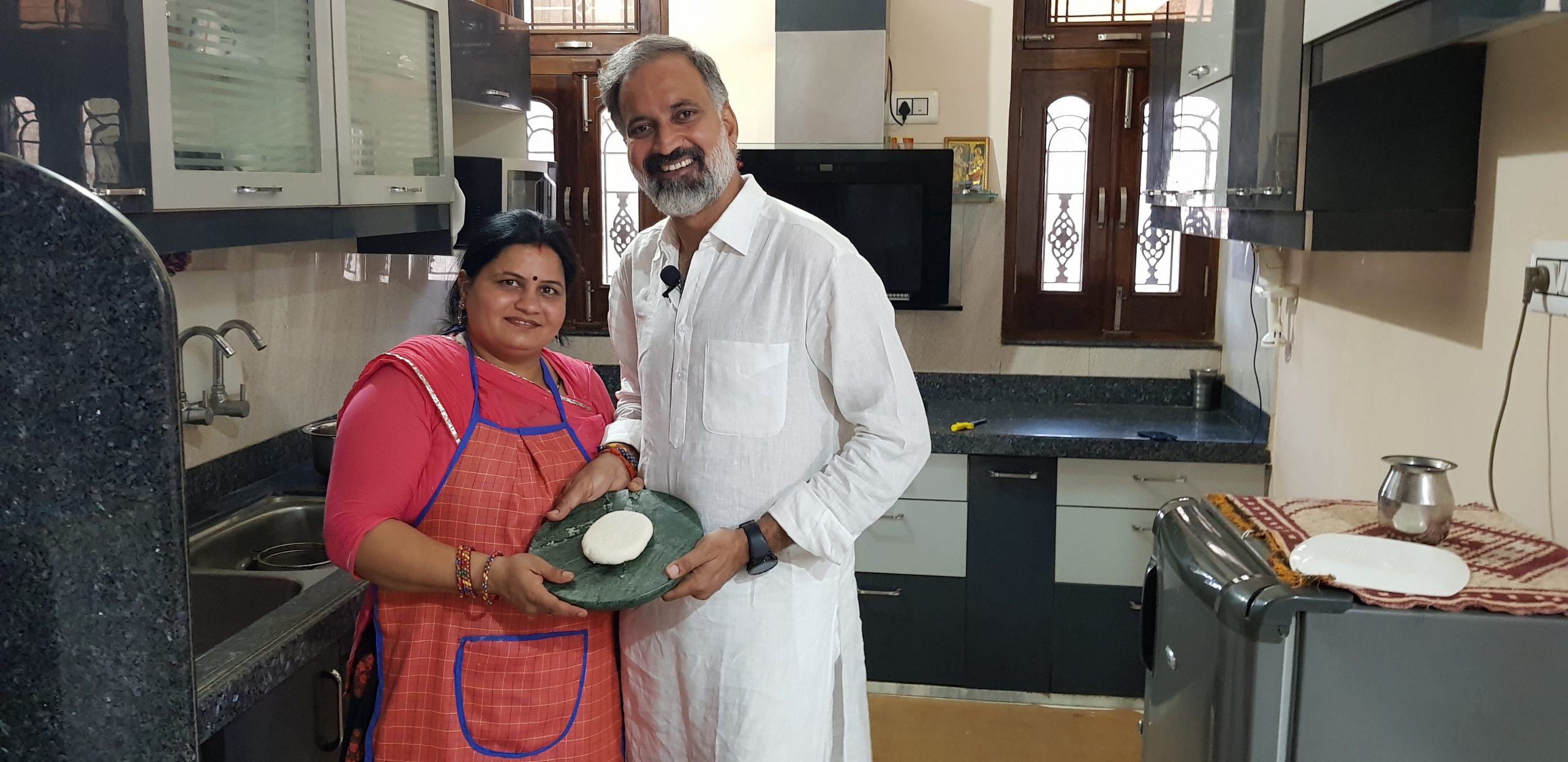English




Let Vishnu and Annu guide you from their home in India! Make room in your kitchen, and we guarantee a change of pace!
During this Indian cooking workshop, you will learn how to prepare a Paneer Massala. Usually, this vegetarian dish is eaten with peas. But in this cooking class with Annu and Vishnu, we will make it with peppers, to make it more tasty. Paneer Massala can be served with rice, bread, lentils, etc. In the version we propose, we will serve it with rice.
And to further immerse you in his culture, Vishnu will tell us stories about India and the national cuisine.
You will need the following equipment:
- Large pot (wok or pot) ideally with a flat bottom
- Wooden spatula
- Lid
- Fine cotton cloth (to use as a strainer) such as a tea towel
You should prepare the cheese a few hours beforehand so that it can rest in the fridge. The instructions to follow are in the video below.
Receipe of the Paneer cheese.
You will receive the list of ingredients needed for this recipe in the days following your reservation.
What does "Masala" mean? We often translate it as “Curry of”, but this is not correct. We use the word 'curry' when it is in a powder state, whereas in India the powder is called 'Massala', and it becomes 'curry' when it is prepared and therefore becomes a sauce, a juice…
The 4 most used spices which are the basis of Indian cuisine:
Cumin seeds: they are put at the beginning of the preparation of each dish, just after the oil. They help digestion.
Coriander: In India, with the heat, people tend to have high blood pressure. This creates the need to refresh the inside of his body to avoid health concerns. Coriander helps maintain body temperature.
Turmeric = “anti everything”: it is used a lot in the Covid period for the immunity it provides. There is a preparation called “Golden Milk” which is drunk in the evening to prepare the body. A pinch of turmeric is put in all medicinal drinks for cough, fever, etc.
Chilli: it is not of Indian origin, but Portuguese. The Portuguese came to India by sea, particularly to look for spices, including Indian pepper (malaba pepper = “heavy”). When they came, they exchanged their chilli for pepper. Pepper is also used in India too, but to a lesser extent than in Europe (in medicine for example). In hot countries, eating chilli cuts thirst and helps keep water in your body. This is why the Indians eat a lot of chilli.
We will define the date of your Experience together.
The price is decreasing. If you are booking this workshop for:
You can be in the same place, or remotely during the workshop.
Book for your loved ones!
We answer all your questions by email: